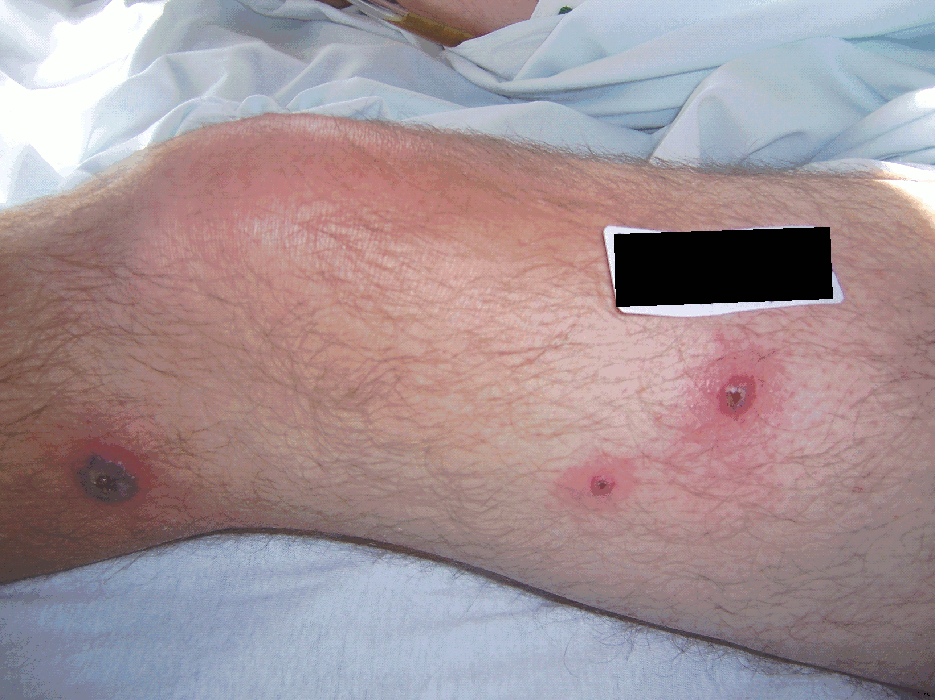Sweet Syndrome: Symptoms, Causes, Treatment
What are the symptoms of Sweet syndrome?
Sweet syndrome, also known as acute febrile neutrophilic dermatosis, is a rare skin condition characterized by the sudden onset of fever and painful skin lesions. The symptoms of Sweet syndrome can vary but typically include:
- Skin lesions: The hallmark symptom of Sweet syndrome is the development of raised, red, tender bumps or patches on the skin. These lesions can vary in size and may be located on the arms, legs, face, or trunk.
- Fever: People with Sweet syndrome often experience a fever, which may be high or low grade.
- Pain or tenderness: The skin lesions associated with Sweet syndrome can be painful or tender to the touch.
- Fatigue: Many people with Sweet syndrome experience fatigue or a general feeling of being unwell.
- Other symptoms: Some people with Sweet syndrome may also experience joint pain, headaches, or other flu-like symptoms.
It’s important to note that the symptoms of Sweet syndrome can resemble those of other skin conditions and diseases, so it’s important to see a healthcare provider for a proper diagnosis if you experience these symptoms. Sweet syndrome can be a sign of an underlying condition, such as an infection, inflammatory disorder, or cancer, so prompt evaluation and treatment are important.
What are the causes of Sweet syndrome?
The exact cause of Sweet syndrome is not fully understood, but it is thought to be related to an abnormal immune system response. In many cases, Sweet syndrome is triggered by an underlying condition or factor that stimulates the immune system. Some common causes and triggers of Sweet syndrome include:
- Infections: Sweet syndrome can be triggered by infections, particularly respiratory or gastrointestinal infections caused by bacteria or viruses.
- Inflammatory conditions: Some inflammatory conditions, such as inflammatory bowel disease, rheumatoid arthritis, or certain types of cancer, can trigger Sweet syndrome.
- Medications: Certain medications, including some antibiotics, nonsteroidal anti-inflammatory drugs (NSAIDs), and medications used to treat inflammatory conditions, have been associated with Sweet syndrome.
- Pregnancy: Sweet syndrome can occur during pregnancy, possibly due to hormonal changes and immune system alterations.
- Other factors: Other factors that may contribute to the development of Sweet syndrome include vaccinations, autoimmune disorders, and genetic predisposition.
It’s important to note that while these factors may contribute to the development of Sweet syndrome, not everyone with these factors will develop the condition. Sweet syndrome is considered a rare condition, and more research is needed to fully understand its causes and triggers.
What is the treatment for Sweet syndrome?
The treatment for Sweet syndrome, also known as acute febrile neutrophilic dermatosis, typically involves medications to reduce inflammation and manage symptoms. The choice of treatment depends on the severity of the symptoms and the underlying cause, if one is identified. Here are some common treatment approaches for Sweet syndrome:
- Corticosteroids: Oral corticosteroids, such as prednisone, are often the first-line treatment for Sweet syndrome. These medications help reduce inflammation and suppress the immune system’s abnormal response. The dosage and duration of corticosteroid treatment depend on the severity of the symptoms and the individual’s response to treatment.
- Topical corticosteroids: For mild cases of Sweet syndrome or for lesions that are limited to a small area, topical corticosteroids may be prescribed to reduce inflammation and relieve itching.
- Nonsteroidal anti-inflammatory drugs (NSAIDs): NSAIDs, such as ibuprofen or naproxen, may be used to help reduce pain and inflammation associated with Sweet syndrome.
- Other immunosuppressive medications: In cases where corticosteroids are not effective or cannot be used long-term, other immunosuppressive medications may be prescribed. These medications help suppress the immune system’s abnormal response and reduce inflammation. Examples include colchicine, dapsone, and cyclosporine.
- Treatment of underlying conditions: If Sweet syndrome is triggered by an underlying condition, such as an infection or inflammatory disorder, treating the underlying condition may help improve symptoms of Sweet syndrome.
- Avoiding triggers: In some cases, identifying and avoiding triggers that may exacerbate Sweet syndrome, such as certain medications or infections, can help prevent flare-ups.
It’s important to work closely with a healthcare provider to determine the most appropriate treatment for Sweet syndrome based on individual factors and the underlying cause, if one is identified. Treatment may need to be adjusted based on the response to therapy and the presence of any side effects.




